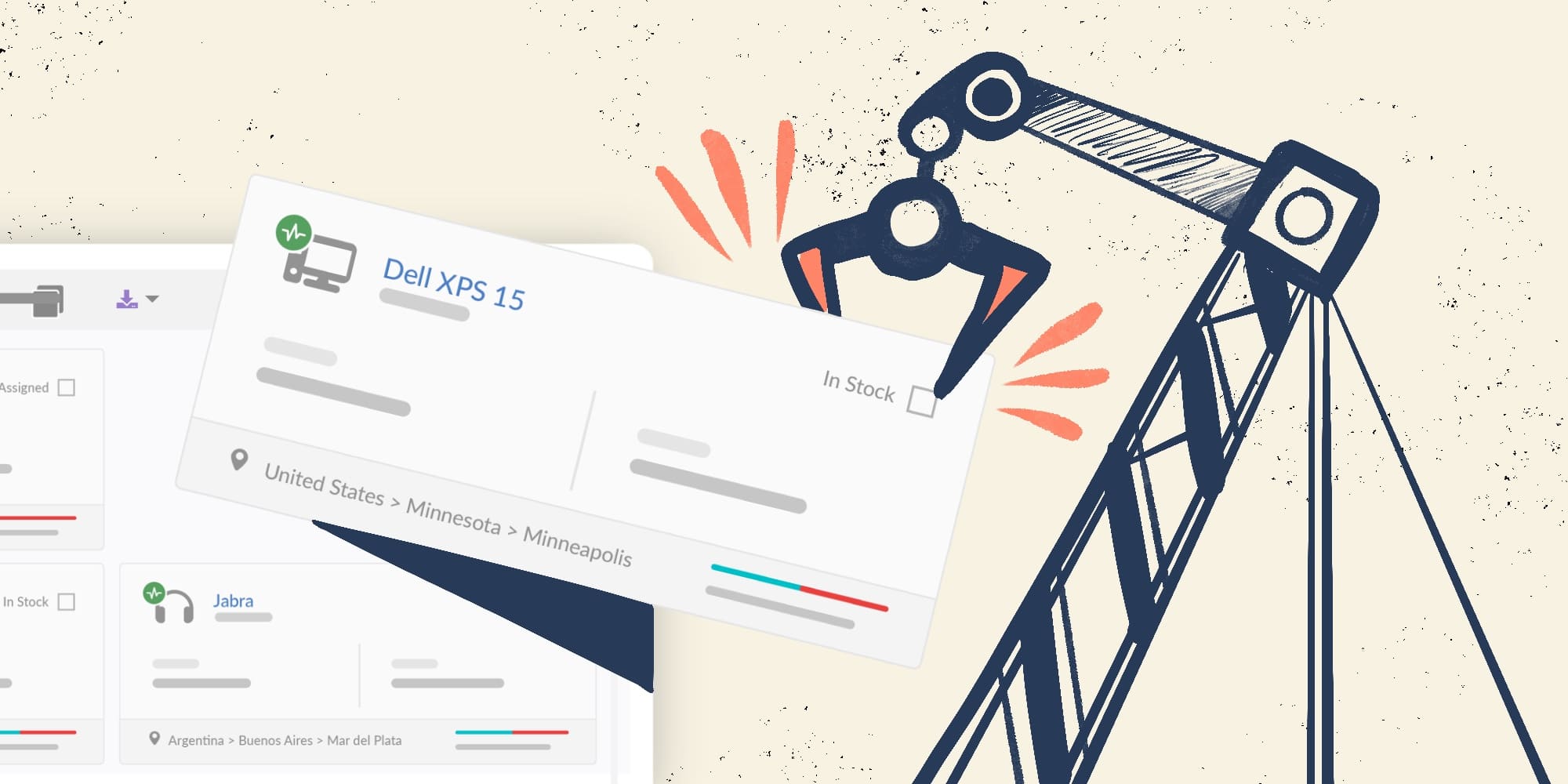IoT Device Lifecycle Management might sound like a mouthful, but it’s the secret sauce behind keeping the ever-growing world of connected devices running smoothly. From smart thermostats to industrial sensors, IoT devices are transforming how we live and work. But managing them is no small feat — especially with the number of global IoT connections expected to more than double from 15.9 billion in 2023 to over 32.1 billion by 2030 (Statista, 2023).
So, why does it matter? Well, because without proper Lifecycle Management, these devices can become security risks, performance bottlenecks, or even expensive e-waste. That’s why understanding the ins and outs of IoT Device Lifecycle Management is key to staying secure, efficient, and ahead of the curve.
In this blog post, we’ll unravel what IoT Device Lifecycle Management is and why it’s critical in today’s hyper-connected world. You’ll learn about the stages of an IoT device’s lifecycle, discover common pitfalls to avoid, and get actionable tips to optimize your IoT ecosystem for security, efficiency, and long-term success.
Understanding IoT Device Lifecycle Management
Before we dive into the specifics of IoT Device Lifecycle Management, let’s start with the basics: what is IoT, and why should you care?
What is IoT (Internet of Things)?
The Internet of Things (IoT) refers to a massive network of devices — from smart thermostats and fitness trackers to industrial sensors — that are connected to the internet, collecting and sharing data. These devices aren’t just "smart" for the sake of it; they’re designed to automate tasks, provide real-time insights, and drive more informed decision-making.
What exactly is an IoT device?
Just to be clear, an IoT device is any gadget, sensor, or machine that connects to the internet to share information or perform tasks remotely. Think of your smartwatch sending step counts to your phone or a smart sprinkler system adjusting watering schedules based on weather forecasts. These devices power the IoT network and are becoming more integral to both personal and industrial operations.
Why is IoT a big deal?
IoT isn’t just a tech buzzword — it’s a game-changer. These devices enable automation and improve processes across industries. Imagine a fridge reminding you to buy milk or a factory sensor alerting managers to potential equipment failures before they occur. The ability to gather and act on data in real time is what makes IoT indispensable.
What is IoT Device Lifecycle Management?
Now, let’s get into IoT Device Lifecycle Management. This is the structured process of ensuring IoT devices function securely and efficiently throughout their entire lifespan, from planning and deployment to eventual retirement. It involves multiple stages, each critical for maintaining the performance, security, and sustainability of your IoT ecosystem.
In the next sections, we’ll explore these phases in detail and share strategies to help you master each step of the IoT device lifecycle.

The phases of IoT Device Lifecycle Management
Managing the lifecycle of an IoT device involves several key phases, similar to traditional Device Lifecycle Management, but with a few twists. Unlike regular devices, IoT devices are deeply interconnected, rely heavily on data, and often have to operate in diverse and sometimes remote environments. This makes the process more complex and introduces unique challenges, such as ensuring continuous security, maintaining network connectivity, and managing vast amounts of data.
While the foundational principles are similar, IoT Device Lifecycle Management demands a more proactive, data-driven approach tailored to the dynamic nature of connected devices. Below, we’ll break down the distinct phases of IoT Device Lifecycle Management and explore what makes this process so specific to the world of IoT.
1. Planning and design
The first phase focuses on identifying the purpose of the IoT deployment and designing devices to meet specific requirements. This step involves:
- Defining objectives: What problem does the IoT device solve?
- Selecting technologies: Choosing sensors, connectivity options (Wi-Fi, cellular, etc.), and platforms.
- Addressing scalability: Ensuring the design can handle growth as the IoT ecosystem expands.
- Security by design: Incorporating security features into the device from the outset.
For IoT, this phase is critical because each device must integrate seamlessly with existing systems and handle unique operational demands like remote updates or low power consumption.
2. Procurement and deployment
Once the planning is complete, devices are procured, configured, and deployed. This phase includes:
- Hardware sourcing: Acquiring devices that meet your specs.
- Initial setup: Configuring devices for their intended environment, including network settings and data collection parameters.
- Deployment logistics: Strategizing placement, especially for devices in remote or industrial settings.
In IoT, deployment often involves handling large-scale rollouts and ensuring that each device is properly authenticated and connected to the network.
3. Operation and maintenance
This is the longest phase in the lifecycle, where devices are actively in use. Key activities include:
- Performance monitoring: Continuously tracking device functionality and data output.
- Software updates: Patching vulnerabilities or improving performance remotely.
- Issue resolution: Detecting and addressing hardware or software malfunctions.
IoT-specific challenges in this phase include managing firmware updates across many devices and ensuring uninterrupted connectivity in diverse environments.
4. Decommissioning and retirement
No device lasts forever. The final phase focuses on safely retiring devices that are no longer functional or needed. This step involves:
- Data erasure: Securely removing sensitive information stored on the device.
- Hardware disposal or recycling: Following environmentally friendly practices to dispose of or repurpose hardware.
- Replacement planning: Ensuring continuity by integrating newer, more advanced devices into the ecosystem.
For IoT, decommissioning is especially critical as poorly managed retirements can leave security vulnerabilities or waste valuable resources.

Benefits of IoT Device Lifecycle Management
When done right, IoT Device Lifecycle Management is like having a well-oiled machine in a tech-savvy world. It’s not just about keeping things running smoothly; it’s about unlocking a treasure trove of advantages that can revolutionize how businesses operate. Let’s explore the unique benefits this process brings to the table.
1. Enhanced security
With billions of IoT devices exchanging data, security isn’t just a priority — it’s essential for survival in today’s hyper-connected world. IoT Device Lifecycle Management plays a critical role by ensuring devices are properly configured, regularly updated, and securely decommissioned.
These measures protect against vulnerabilities that could otherwise lead to data breaches, disrupt operations, or expose sensitive information. By proactively addressing security throughout the lifecycle, organizations can mitigate risks and maintain trust in their IoT ecosystems. As David Moskowitz emphasizes in episode 45 of Ticket Volume - IT Podcast:
“The idea that everybody's connected now through the Internet of Things means we have an expanding attack surface.”
David Moskowitz,
2. Improved operational efficiency
IoT devices are designed to make things smarter, and Lifecycle Management ensures they deliver on that promise. By monitoring performance, detecting issues early, and streamlining updates, businesses avoid downtime and get the most out of their devices. Whether it’s a factory running smoother or logistics becoming a breeze, efficiency is the name of the game.
3. Cost savings
IoT devices aren’t cheap, and mismanagement can turn them into money pits. Lifecycle Management ensures you’re making every dollar count by extending device lifespans, reducing maintenance costs, and avoiding expensive security incidents. Plus, proper planning helps prevent unnecessary purchases, so you only invest in what you truly need.

4. Data-driven insights
The beauty of IoT lies in the data it generates, and Lifecycle Management ensures that data is reliable and actionable. By keeping devices operational and secure, you gain consistent insights that can drive better decisions, from optimizing energy usage to improving customer experiences. The more your devices thrive, the better your data gets.
5. Sustainability and compliance
Managing the lifecycle responsibly isn’t just good business — it’s good for the planet. Proper decommissioning ensures e-waste is minimized, and many jurisdictions require compliance with strict environmental regulations. Staying on top of this makes your organization a leader in sustainability, which customers and stakeholders love.
Challenges of IoT Device Lifecycle Management
Of course, where there are benefits, there are challenges. Managing IoT devices isn’t always a walk in the park — it’s more like navigating a jungle of complexity, scale, and security concerns. Let’s take a closer look at the hurdles you might face and why they’re unique to IoT.
1. Scalability and complexity
IoT ecosystems grow fast. Managing ten devices is manageable, but what about 10,000? Each device has its own firmware, connectivity, and security requirements. Scaling up without a solid Lifecycle Management plan can lead to chaos, from unpatched devices to network congestion.
2. Security risks
IoT devices are prime targets for cyberattacks because they often lack robust built-in security. Managing updates, monitoring threats, and decommissioning devices properly is an ongoing battle. Neglecting any of these can leave the entire ecosystem vulnerable to attacks like malware or unauthorized access.

3. Connectivity challenges
IoT devices rely on uninterrupted network access, but connectivity isn’t always reliable, especially in remote or industrial environments. Lifecycle Management must account for devices losing connection or operating in areas with inconsistent coverage, which adds layers of complexity.
4. Data overload
IoT devices generate massive amounts of data, and managing it isn’t as simple as just collecting and storing it. Organizations must figure out how to process, analyze, and secure this data without overwhelming their systems or violating privacy regulations.
5. End-of-life management
Retiring IoT devices isn’t as simple as tossing them in the bin. Without proper Lifecycle Management, retired devices could leave sensitive data exposed or contribute to growing e-waste. Ensuring secure data deletion and environmentally friendly disposal is a challenge many businesses underestimate.

Implementing an IOT Device Lifecycle Management strategy
Creating a successful IoT Device Lifecycle Management strategy is all about combining proactive planning with practical execution. It’s not just a one-size-fits-all approach — every organization has unique challenges and goals.
However, some key recommendations can guide any business in building a robust strategy that keeps their IoT ecosystem secure, efficient, and future-ready. Let’s explore these essential steps:
1. Start with a clear governance framework
Begin by establishing clear policies and procedures for managing IoT devices throughout their lifecycle. This includes defining roles and responsibilities for teams, setting security standards, and ensuring compliance with regulations. A well-defined governance framework lays the foundation for consistency and accountability across the board.
2. Embrace automation for updates and monitoring
Managing a fleet of IoT devices manually is almost impossible. Automate firmware updates, security patches, and performance monitoring to reduce human error and ensure devices are always up-to-date. Automation also helps identify and address issues in real time, keeping your operations running smoothly.
3. Plan for scalability
As your IoT network grows, so do the complexities of managing it. Design your strategy to scale effortlessly by using centralized management platforms and standardized device configurations. This will save time, reduce costs, and simplify operations as you add more devices to the ecosystem.
4. Prioritize security at every stage
Security isn’t a one-and-done deal — it needs to be baked into every phase of the lifecycle. From secure configurations during deployment to encrypted data transfer and rigorous decommissioning processes, prioritize measures that protect your devices and the data they handle.
5. Monitor and analyze data proactively
Your IoT devices generate vast amounts of data — use it to your advantage. Regularly analyze performance metrics, detect anomalies, and refine your Lifecycle Management processes based on insights. A data-driven approach ensures you’re always improving and adapting to evolving challenges.
6. Plan for end-of-life from the start
Don’t wait until a device is outdated to figure out what to do with it. Plan for secure decommissioning and recycling from day one. This ensures compliance with environmental regulations and eliminates the risk of retired devices being exploited.
What is Mobile Device Lifecycle Management, and why is it related to IoT?
Mobile Device Lifecycle Management (MDLM) refers to the end-to-end process of managing mobile devices — such as smartphones, tablets, and laptops — throughout their lifecycle. From procurement and deployment to maintenance, updates, and eventual retirement, MDLM ensures these devices remain functional, secure, and cost-effective for organizations.
So, how does this connect to IoT Device Lifecycle Management? Here’s why the two are closely related:
1. Overlapping ecosystems
Many mobile devices act as gateways or controllers for IoT ecosystems. For instance, a smartphone might serve as the hub for a smart home system or as a controller for industrial IoT sensors. Managing mobile devices effectively ensures the broader IoT system stays functional and secure.
2. Shared lifecycle challenges
Both IoT and mobile devices face similar lifecycle challenges, including security vulnerabilities, the need for regular updates, and complex decommissioning processes. Insights from MDLM best practices can directly enhance IoT Device Lifecycle Management strategies.
3. Data dependency
Just like IoT devices, mobile devices rely heavily on data collection, transfer, and analysis. Proper Lifecycle Management for mobile devices ensures that data integrity and security are maintained across the connected ecosystem.
4. Scalability and connectivity
As businesses deploy more IoT and mobile devices, managing both becomes an issue of scalability. Unified Lifecycle Management practices that address both IoT and mobile devices streamline operations, reduce redundancy, and enhance efficiency.
Conclusion: Mastering IoT Device Lifecycle Management
IoT Device Lifecycle Management is more than a technical necessity; it’s a strategic cornerstone for any organization embracing connected technologies. By ensuring devices are secure, optimized, and responsibly managed throughout their lifecycle, businesses can unlock greater efficiency, cost savings, and sustainability.
The unique challenges of IoT — from scaling operations to tackling security risks — highlight the importance of a proactive and tailored approach. With best practices like automating updates, planning for scalability, and embedding security at every stage, organizations can transform these challenges into opportunities for growth and resilience.
In an ever-connected world, mastering Lifecycle Management is essential for making IoT ecosystems secure, efficient, and future-ready.















